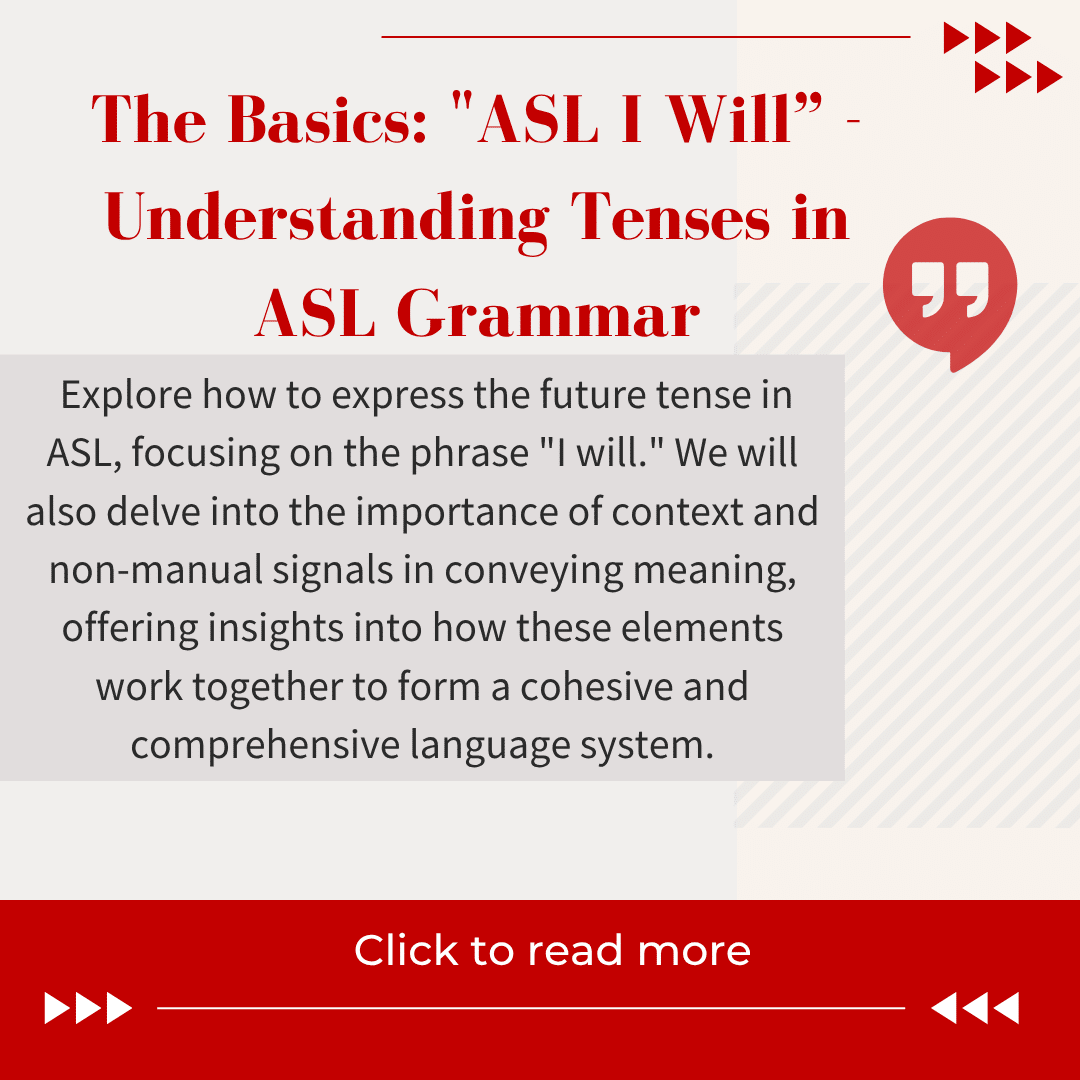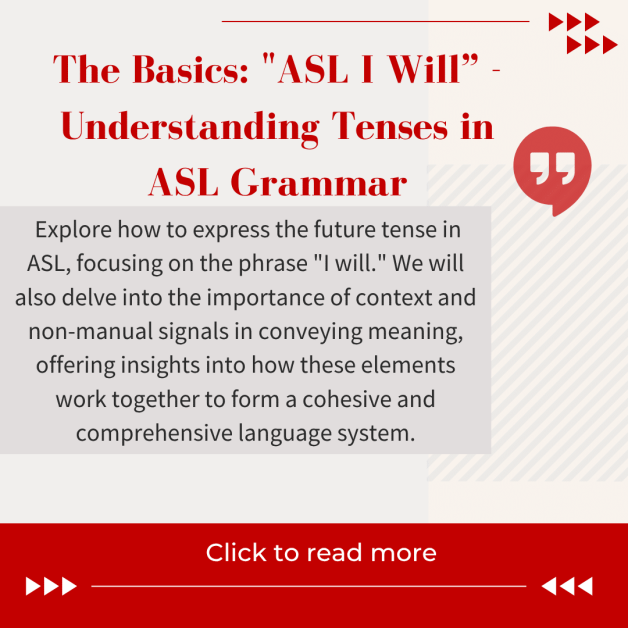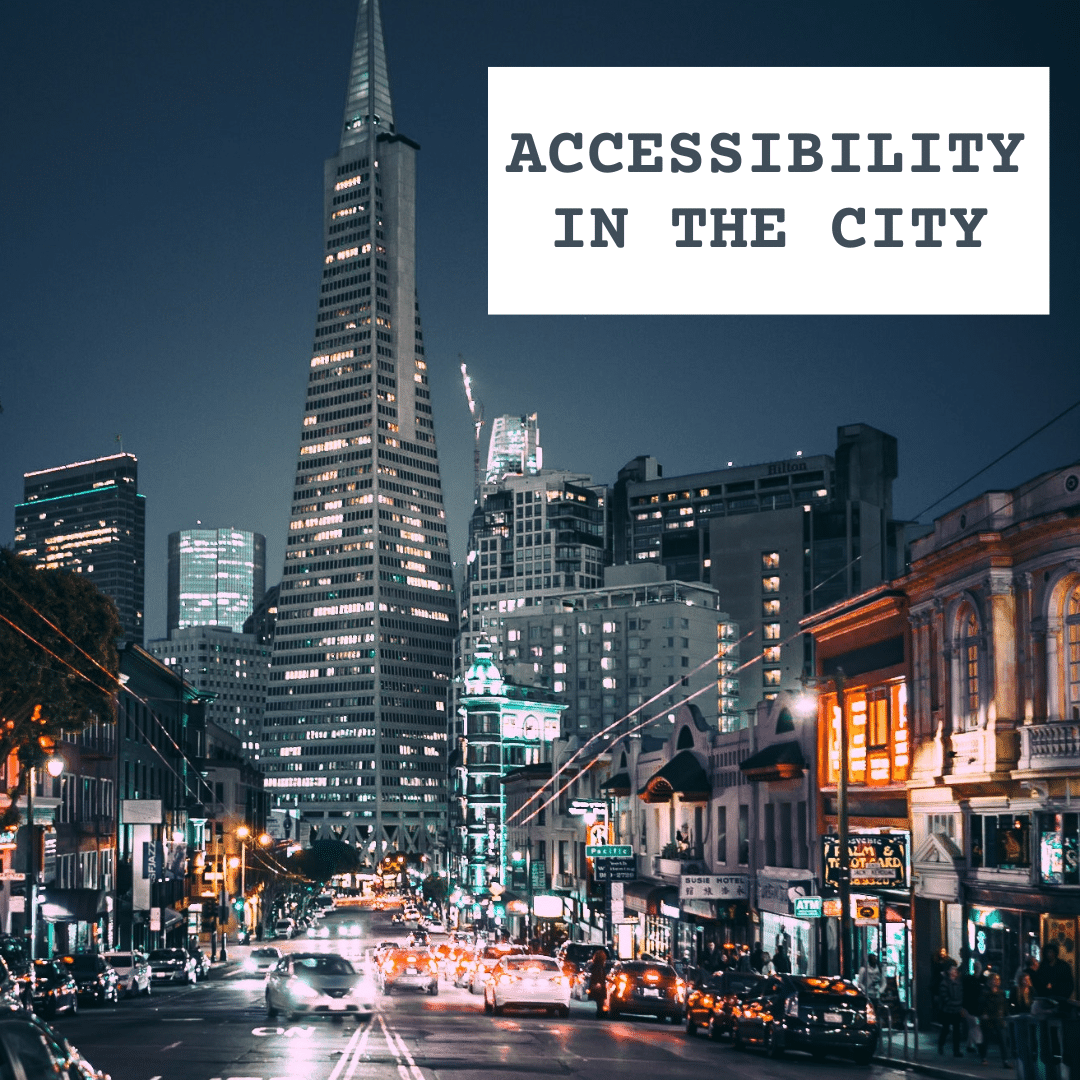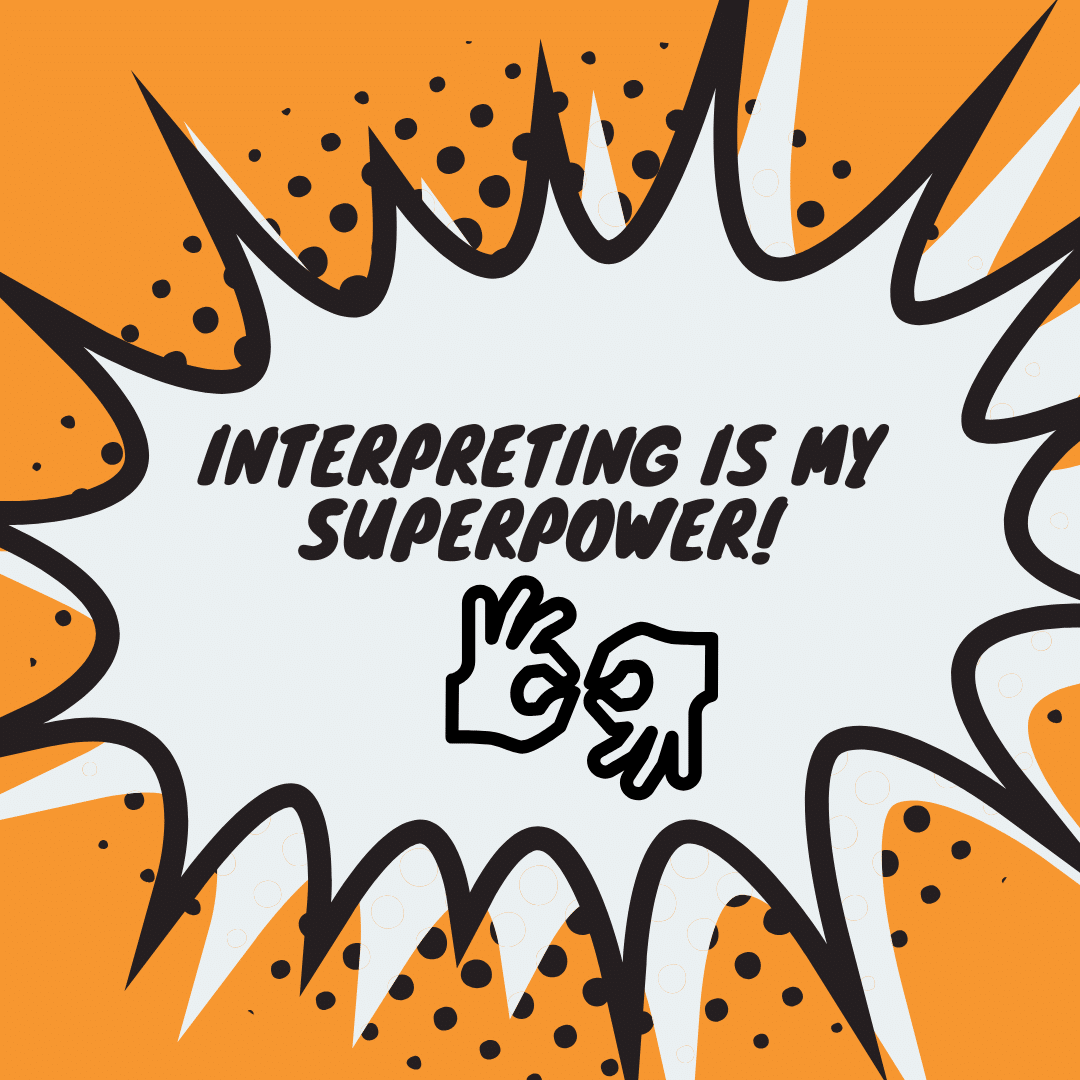
The Basics: “ASL I Will” – Understanding Tenses in ASL Grammar
- by Start ASL

ASL allows its users to express emotions, ask questions, and convey complex narratives, making it a rich and dynamic form of communication. One essential aspect of mastering ASL is understanding how to express different tenses, such as the future tense, including phrases like “ASL I will.”
In this article, we will explore how to express the future tense in ASL, focusing on the phrase “I will.” We will also delve into the importance of context and non-manual signals in conveying meaning, offering insights into how these elements work together to form a cohesive and comprehensive language system.
Understanding ASL and Tenses
Before diving into the specifics of future tense expressions, it’s essential to grasp how ASL functions as a language. Unlike spoken English, ASL has its own grammar and syntax, which does not follow English word order. Instead, it relies heavily on spatial grammar and the use of classifiers. ASL is a visual-gestural language, meaning it prioritizes visual elements over auditory ones, allowing for a unique way of structuring sentences and conveying information.
How ASL Expresses Tenses
ASL does not conjugate verbs in the same way spoken languages do. Instead, it uses time indicators to set the tense. These indicators can be specific signs, such as “yesterday,” “today,” or “tomorrow,” or they might include a broader context established at the beginning of a conversation. Additionally, ASL can use the space around the signer to indicate different time frames, with movements in space often corresponding to shifts in time, such as moving a hand backward for past actions.
Unlike spoken languages that rely on verb conjugation to express time, ASL’s approach to tense is more fluid and context-dependent. This fluidity allows signers to adapt their communication based on the immediate context and the listener’s understanding, making it a flexible and adaptive language.
The Future Tense in ASL
To express the future tense in ASL, you often use the sign for “will.” This sign involves moving your hand forward in space, symbolizing something that will happen later. However, context is key, and the absence of specific time indicators might require the listener to infer the tense from the conversation. For example, if a conversation begins with a reference to a future event, subsequent actions can be understood as occurring in the future without the need to repeatedly sign “will.”
In addition to hand movements, facial expressions and body posture play a crucial role in indicating future tense. A forward lean or raised eyebrows can add emphasis and clarity to the intention of a future action, ensuring that the message is conveyed accurately and effectively.
How to Sign “I Will” in ASL
Signing “I will” in ASL is straightforward once you understand the basic concepts. Here’s how you can do it:
Start with the Sign for “I”: Point to yourself using your dominant hand. This sign is a simple yet powerful way to establish the subject of the sentence.
Follow with the Sign for “Will”: Extend your dominant hand forward with a slight upward motion. This forward movement is crucial as it indicates the future tense, symbolizing an action or event that is yet to occur.
Incorporating Non-Manual Signals
ASL relies heavily on non-manual signals, such as facial expressions and body movements, to add context and emotion to the signs. When signing “I will,” you might raise your eyebrows or tilt your head forward to indicate certainty or emphasis. These non-manual signals are vital to ensuring that your message is understood correctly. They add layers of meaning and nuance, transforming a simple statement into a rich, expressive communication.
Non-manual signals can also convey emotions and attitudes, such as confidence, doubt, or enthusiasm, which can significantly alter the meaning of a phrase. By mastering these subtle cues, signers can enhance their ability to communicate effectively and connect more deeply with their audience.
Common Phrases Using “I Will” in ASL
Understanding how to sign “I will” opens up a world of communication possibilities. Here are some common phrases you might use:
“I will help you.” Combine the signs for “I,” “help,” and “you,” while using the forward motion for “will.” This phrase can be further enriched with non-manual signals that express eagerness or willingness to assist.
“I will see you later.” Sign “I,” “see,” “you,” and “later,” using the appropriate non-manual signals to convey your intent. A friendly smile or a nod can emphasize the casual or friendly nature of the meeting.
“I will miss you.” This phrase combines “I,” “miss,” and “you,” with “will” indicating the future aspect. A sad or longing facial expression can add depth to the sentiment, conveying the emotional weight of the absence.
Contextual Understanding
The meaning of “I will” in ASL can vary depending on the context. For example, the phrase “I will miss you” implies a future absence, while “I will see you later” suggests a future meeting. Understanding the context is crucial for accurate communication. Context helps bridge the gap between literal signs and intended meaning, allowing for a richer and more nuanced exchange.
Interpreting the context involves considering the broader conversation, the relationship between the signers, and any external factors that might influence the meaning. By being attentive to these elements, signers can ensure their messages are received and understood as intended.
Exploring Other Tenses in ASL
While this article focuses on the future tense, it’s important to note that ASL also has ways to express the past and present tenses. Mastering these tenses is essential for effective communication and storytelling in ASL, allowing signers to convey a full range of temporal experiences.
Present Tense in ASL
To express the present tense, you generally use the base form of the verb without additional time indicators. For instance, “I am learning” would be signed as “I learn,” with context providing the present meaning. The present tense is often implied through the immediacy of the conversation or the situation, requiring signers to rely on cues and context to convey the correct meaning.
Body language and facial expressions can also indicate the present tense, adding immediacy and relevance to the conversation. By combining these elements, signers can effectively communicate actions and states occurring in the present moment.
Past Tense in ASL
For the past tense, you often use signs like “before” or “finished” to indicate that an action has already occurred. The sign for “past” involves moving your hand backward, away from your body. This spatial movement is a visual metaphor for events that have already transpired, providing a clear and intuitive way to express past actions.
In addition to specific signs, context and non-manual signals play a crucial role in conveying the past tense. A reflective or thoughtful expression can add depth to a past event, helping to convey the emotional or narrative significance of the action.
Tips for Mastering ASL Tenses
Learning to express different tenses in ASL requires practice and exposure to real-life conversations. Here are some tips to help you master ASL tenses:
Practice with Native Signers: Engage with Deaf communities and practice signing with native ASL users to improve your skills and understanding. Immersing yourself in the language environment can accelerate learning and provide valuable insights into the cultural nuances of ASL.
Watch ASL Videos: Online resources and videos can provide valuable insights into how native signers use tenses in everyday communication. Observing natural conversations can help you understand the flow and rhythm of ASL, enhancing your ability to use tenses accurately.
Conclusion
Understanding how to express “I will” and other tenses in ASL is a crucial step in becoming proficient in the language. By combining hand signs with non-manual signals and context, you can effectively communicate future intentions and engage in meaningful conversations. Mastering ASL tenses enhances your ability to tell stories, share experiences, and connect with others on a deeper level.
Whether you’re learning ASL for personal or professional reasons, mastering the nuances of this beautiful language will enhance your ability to connect with the Deaf and hard-of-hearing communities, enriching both your life and theirs. Keep practicing, stay curious, and enjoy the journey of learning ASL! Embrace the challenges and rewards of exploring this expressive language, and you’ll find new ways to engage with the world and the diverse people wit
Start Learning ASL Today!
 Ready to start learning real American Sign Language and not just basic signs? Do you want to be a part of the vibrant Deaf community? Check out our Free ASL 1 Course or our Complete 4-Level ASL Course options and start learning ASL today!
Ready to start learning real American Sign Language and not just basic signs? Do you want to be a part of the vibrant Deaf community? Check out our Free ASL 1 Course or our Complete 4-Level ASL Course options and start learning ASL today!








